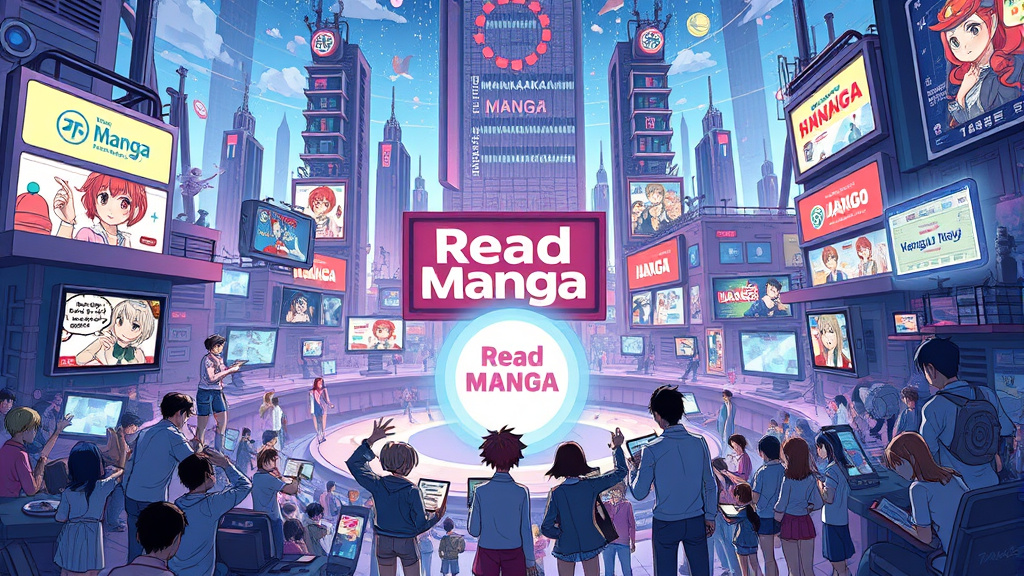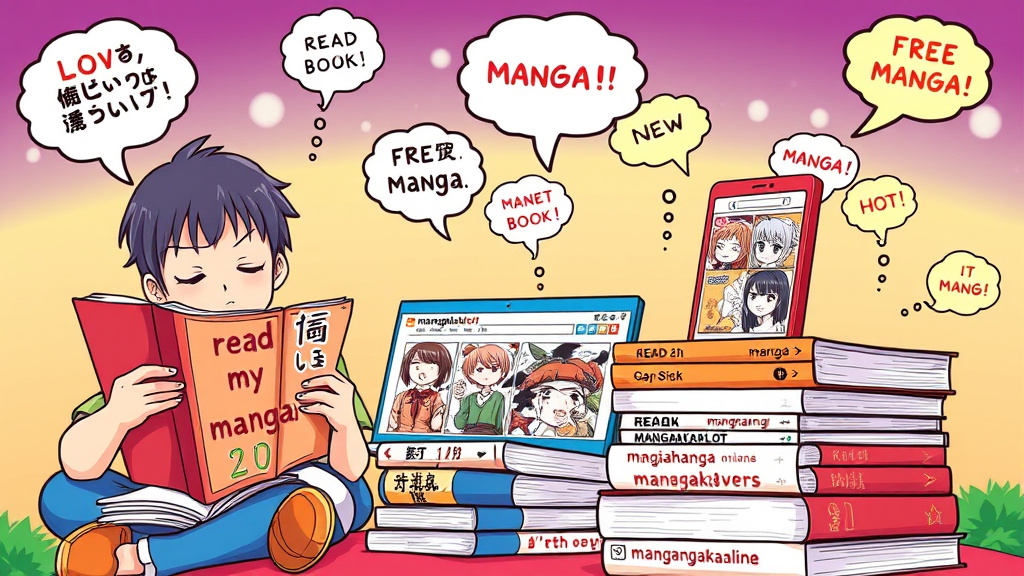In the vast ocean of manga, few titles have achieved the cultural significance and enduring popularity of op manga like One Piece. Created by Eiichiro Oda, this masterpiece has captivated millions with its intricate storytelling, compelling characters, and immersive world-building. This comprehensive overview delves into what makes One Piece a monumental work, exploring its themes, artistry, and influence that continue to resonate with fans old and new.
One Piece Manga: A Comprehensive Overview
One Piece is an epic adventure manga that debuted in Shueisha’s Weekly Shonen Jump magazine in 1997. The story follows Monkey D. Luffy, a spirited young pirate whose body gains the properties of rubber after eating a mystical fruit known as the Gum-Gum Fruit. Embarking on a quest to find the legendary treasure One Piece, Luffy forms a diverse crew, the Straw Hat Pirates, united by loyalty, dreams, and a shared sense of justice. Over the decades, One Piece has evolved into an expansive saga, blending humor, emotional depth, and relentless action.
At its core, One Piece is a reflection on freedom and friendship, wrapped within a universe brimming with strange islands, powerful enemies, and rich lore. Its continuous evolution showcases Oda’s mastery in balancing character arcs, plot twists, and thematic resonance. Despite its length—spanning over a thousand chapters—it remains incredibly engaging, continually inviting both casual readers and dedicated fans into its expansive world.
 Hình minh họa: op manga – read manga offline
Hình minh họa: op manga – read manga offlineThe Enduring Appeal of One Piece Manga – Why It Remains Popular
The sustained popularity of One Piece can largely be attributed to its unparalleled ability to evolve while maintaining its core essence. Fans are drawn to the manga’s relentless optimism, the flamboyant personalities of its characters, and the overarching message of perseverance and dreams. Oda’s storytelling weaves emotional sundaes sprinkled with humor, making the narrative accessible across generations. Its universality lies in its depiction of relatable desires—freedom, acceptance, and the pursuit of one’s destiny—all themes that resonate deeply across diverse audiences.
Furthermore, One Piece’s meticulous world-building and complex character relationships create a living, breathing universe that fans want to explore endlessly. An enduring sense of mystery—such as the origins of the Void Century or the true nature of the One Piece treasure—inspires endless speculation and fan theories. This participatory engagement, combined with a carefully maintained pace of storytelling, ensures that op manga like One Piece remains not only relevant but a cultural phenomenon that continues to flourish, engaging new readers and retaining loyal followers for over two decades.

One Piece Manga – Exploring Key Themes and Symbolism
At its core, One Piece operates on a tapestry of themes that reflect both personal growth and societal critique. The pursuit of dreams, or “haki” in the world of pirates, is emblematic of sending a message that perseverance against all odds leads to eventual fulfillment. Oda uses op manga as a medium to explore themes like freedom versus control, the journey to self-identity, and the importance of friendship—each woven seamlessly into the narrative fabric.
Symbolism is deeply embedded in One Piece, from the iconic Straw Hat representing Luffy’s leadership and ideals to the vast, uncharted Grand Line symbolizing the unpredictable path of life itself. The mysterious Void Century alludes to hidden truths about history and power, hinting at real-world issues of censorship and suppressed narratives. Oda’s use of allegorical imagery elevates op manga beyond mere entertainment, transforming it into a compelling mirror reflecting societal values and human aspirations.
Character Development in One Piece Manga – A Deep Dive
One Piece excels in its nuanced character development, turning simple archetypes into complex personalities over a long arc of storytelling. Luffy’s evolution from a carefree boy to a formidable leader underscores themes of resilience and conviction. Each crew member, from Zoro’s unwavering loyalty to Nami’s resilience in patriarchal society, embodies specific ideals and personal struggles. Oda’s patience in exploring these characters’ backstories enriches their motivations, making their growth authentic and relatable.
Intriguingly, much of the manga’s emotional impact stems from these characters’ journeys—not just in battles, but in internal conflicts and relationships. For example, Robin’s tragic past and her quest for knowledge exemplify the manga’s celebration of independence and the pursuit of truth. Oda’s ability to intertwine character growth with overarching narratives maintains reader empathy and investment, ensuring op manga like One Piece remain emotionally compelling over decades.
One Piece Manga – Analyzing the Art Style and Its Evolution
From its humble beginnings, Eiichiro Oda’s art style has evolved remarkably, transitioning from simple line work to highly detailed, expressive character designs. Early chapters featured exaggerated facial expressions and playful antics, encapsulating the manga’s humor. Over time, the artwork has matured, infusing epic battle scenes with dynamic paneling, intricate backgrounds, and emotional nuance that heighten narrative stakes.
This evolution reflects not only technical refinement but also Oda’s deepening storytelling sophistication. The distinctive character designs, such as Luffy’s iconic straw hat or Robin’s ancient face, have become cultural symbols. The art style’s fluidity allows Oda to seamlessly switch from comedic moments to intense confrontations—highlighting the manga’s versatility. Such artistic growth exemplifies how op manga can adapt and push creative boundaries while maintaining consistency and charm.
The World-Building of One Piece Manga – A Masterclass in Fantasy
One Piece’s universe is a sprawling tapestry of islands, seas, and civilizations—each with its own cultures, politics, and mysteries. Oda’s imagination shines through the creation of locales like Water 7, Enies Lobby, or the mysterious Skypiea, each offering distinct environments that contribute to the story’s richness. The depth of detail in maps, customs, and histories demonstrates meticulous planning, transforming the manga into an immersive global adventure.
What makes the world-building exceptional is its layered complexity. Beneath the surface, themes of colonialism, freedom of expression, and social hierarchy are subtly woven into the fabric of each island or faction. The interconnectedness of characters’ origins and the overarching history gradually reveals itself, acting as a narrative mosaic that rewards attentive readers. One Piece stands as a masterclass in fantasy universe creation, inspiring countless other manga and anime with its expansive scope.
One Piece Manga – A Critical Analysis of Story Arcs
The brilliance of One Piece lies in its diverse and well-constructed story arcs, each serving a specific narrative purpose while contributing to the larger saga. From the comedic escapades of the East Blue Saga to the intense themes of justice and rebellion in the Marineford Arc, Oda’s storytelling demonstrates versatility. Critically, these arcs are crafted with meticulous pacing, character growth, and thematic depth that elevate the manga beyond typical shonen fare.
Notable arcs such as Dressrosa or Wano Country showcase Oda’s mastery in merging political intrigue, cultural references, and emotional stakes. The Wano Arc, in particular, exemplifies a culmination of character development, world-building, and poignant narrative threads that weave a tapestry of heroism and tragedy. Such comprehensive storytelling ensures that op manga like One Piece maintains critical acclaim and scholarly interest, cementing its legacy in the manga canon.
The Impact of One Piece Manga on the Shonen Genre
One Piece’s influence on the shonen genre is both profound and multifaceted. It challenged conventional tropes—favoring long-term storytelling, complex characters, and layered themes—paving the way for newer manga to grow beyond the simplistic hero tropes. Its success demonstrated that epic, serialized storytelling could resonate across generations, inspiring a multitude of manga that seek depth and emotional engagement.
Additionally, One Piece established a blueprint for world-building and character development that many subsequent series attempt to emulate. Its blend of humor, action, and social critique expanded the boundaries of what shonen manga could accomplish. As a trailblazer, op manga like One Piece has cemented itself not just as a commercial success but as a cultural pillar that continually influences manga creators and fans worldwide.
One Piece Manga – Predictions and Theories for the Final Saga
Predicting the ending of One Piece involves piecing together hints scattered throughout its chapters. Many fans speculate the revelation of the true history behind the Void Century and the ultimate secret of the One Piece treasure. Theories suggest that Luffy might confront the World Government, leading to a climactic showdown that determines the future of the pirate era. The culmination of decades of storytelling in the final saga is anticipated to be both emotional and thought-provoking.
Personal theories also speculate that the true nature of the One Piece could be symbolic rather than material—perhaps representing freedom itself or a profound truth that redefines the world’s understanding of history. Such speculation keeps the community engaged, eagerly awaiting Oda’s grand conclusion. Ultimately, the final arc promises a resolution that will honor the integrity of the sprawling saga and satisfy its passionate fanbase.
From Page to Screen – The One Piece Manga and Its Adaptations
The transition of One Piece from manga to anime, films, and merchandise has significantly expanded its reach. The anime adaptation, produced by Toei Animation, faithfully captures the manga’s vibrant art style, dynamic battles, and heartfelt moments, bringing the characters and worlds to life with voice acting and music. These adaptations have introduced op manga to an even broader audience, solidifying its place in pop culture.
Beyond anime, One Piece has spawned numerous movies, video games, and merchandise, transforming it into a multimedia franchise. However, some fans debate whether adaptations can fully encapsulate the manga’s depth and pacing, especially given the manga’s ongoing nature. Despite this, the reach and influence of One Piece’s adaptations have helped op manga like it become global phenomena, inspiring countless other creative works within and outside the manga community.
Conclusion
In essence, One Piece as an example of op manga epitomizes the boundless potential of storytelling through sequential art. Its combination of compelling characters, intricate world-building, thematic depth, and artistic evolution has crafted a saga that transcends typical genre boundaries. By continuously reinvigorating its narrative and emotional core, One Piece remains an inspiring masterpiece that connects with diverse audiences worldwide, securing its place as one of the most influential and beloved manga ever created.

